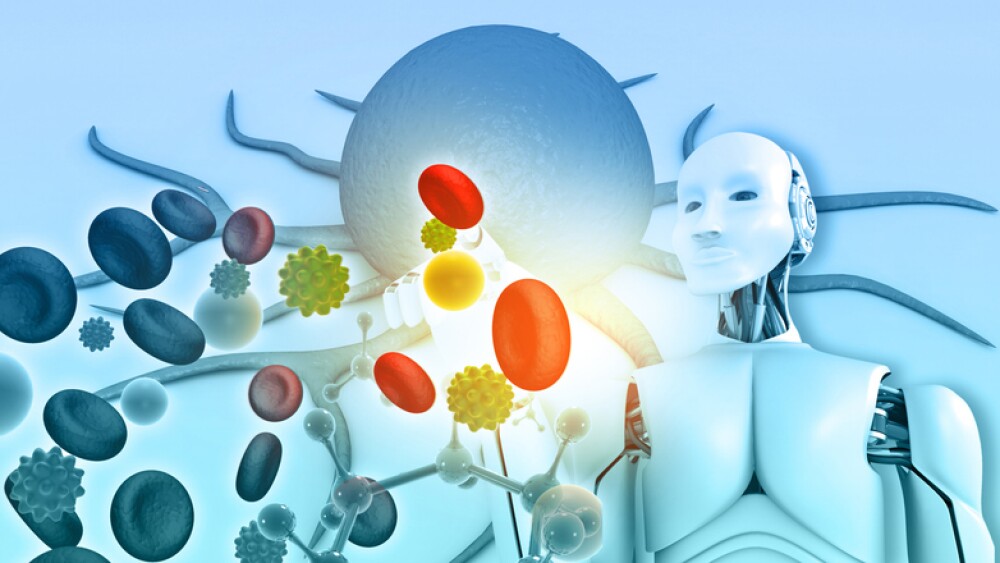Molecules in the saliva may hold promise as a means to track the effectiveness of therapeutic interventions in children with autism spectrum disorder.
SYRACUSE, N.Y., June 3, 2021 /PRNewswire/ -- Molecules in the saliva may hold promise as a means to track the effectiveness of therapeutic interventions in children with autism spectrum disorder (ASD). According to a recently published study, specific RNA molecules in saliva were found to be strongly associated with autistic behaviors in older individuals with Autism Spectrum Disorder, and also change as early as three months in association with changes in behavioral scores in participants engaged in early intervention services. These findings were published in the journal Research in Autism Spectrum Disorder.
Researchers from SUNY Upstate Medical University, Penn State Medical Center, and Quadrant Biosciences discovered that performance in behavioral measures were associated with the expression of microRNA molecules in the saliva of children with autism engaged in early intervention services, and that these molecules may potentially be used to track treatment effectiveness and provide prognosis. The results of this research was published in a paper titled "Longitudinal Stability of Salivary MicroRNA Biomarkers in Children and Adolescents with Autism Spectrum Disorder."
The prevalence of autism spectrum disorder has been consistently on the rise over the past few decades. Most recently, it's estimated that 1 in 54 children are diagnosed with ASD. Despite a better understanding of the developmental disorder, health care providers currently have no biological way to monitor and track the effects of popular intervention therapies such as Applied Behavior Analysis (ABA).
The present study looked at 127 participants between the ages of one and 23 years old, broken into two sub groups. The first group included older participants, with an average age of almost 11 years old (48 ASD, 48 Non-ASD). The second group consisted of 31 children, averaging just over four years old (22 ASD, 9 Non-ASD developmental delay). They were assessed twice, and all participants were diagnosed by trained clinicians using the DSM-5 criteria.
The researchers focused on specific RNA molecules in saliva that had been identified in an earlier study (Hicks, Rajan et al., 2018), with the ability to differentiate children with ASD from peers with typical development or developmental delay. In the older group, seven RNAs showed a significant correlation to the scores on behavioral assessments, such as the Vineland Adaptive Behavior Scales and the Behavior Assessment System for Children.
Moreover, among the younger group of participants, 12 RNAs displayed significant differences between the initial visit and a follow-up visit three to ten months later. Notably, these RNA changes were observed among the 22 children with ASD, but not among the 9 children with non-ASD developmental delays. Of particular interest, four of these RNAs changed in association with changes in behavioral scores, with the participants engaged in early intervention services.
These findings suggest that several ASD-associated salivary RNAs may change with early intervention services, and these changes may reflect reductions in autistic behavior. Consequently, these salivary RNAs could have significant clinical value as objective, biologic measures for providing accurate prognoses and tracking behavioral improvement in children with ASD who are receiving therapeutic interventions.
"These are intriguing findings," said Dr. Steve Hicks, MD PhD, Associate professor at Penn State Hershey College and one of the authors of the research paper. "Although preliminary, further validation of these findings in a larger cohort could pave the way for a simple, non-invasive saliva test that might help families and physicians determine the effectiveness of therapies for children diagnosed with autism."
Quadrant Biosciences, a molecular diagnostics company based in Syracuse, New York, provided funding and partnered in the research. Quadrant's David Levitskiy, a co-author on the study, pointed out the importance of this work from the company's perspective. "These findings are a great complement to the ongoing NIH-funded research at Quadrant Biosciences, where one of the primary goals is to re-assess the salivary RNA profile of children 12 months after the primary visit. This novel approach in tracking RNA changes longitudinally in response to treatment can be another tool at the disposal of clinicians."
Quadrant Biosciences is a life science company developing molecular diagnostic solutions for large-scale health issues. The company has entered into collaborative research relationships with a number of institutions including SUNY Upstate Medical University and Penn State University to explore and develop novel biomarker technologies with a focus on Autism Spectrum Disorder, concussion, and Parkinson's disease. Recently, it has leveraged its expertise in RNA analysis to address the Covid-19 pandemic. Quadrant participates in the Start-up NY program, a New York State economic development program. For more information about Quadrant, please visit www.quadrantbiosciences.com.
![]() View original content to download multimedia:http://www.prnewswire.com/news-releases/molecules-in-saliva-may-hold-the-key-to-tracking-improvements-in-autism-301305608.html
View original content to download multimedia:http://www.prnewswire.com/news-releases/molecules-in-saliva-may-hold-the-key-to-tracking-improvements-in-autism-301305608.html
SOURCE Quadrant Biosciences Inc.





